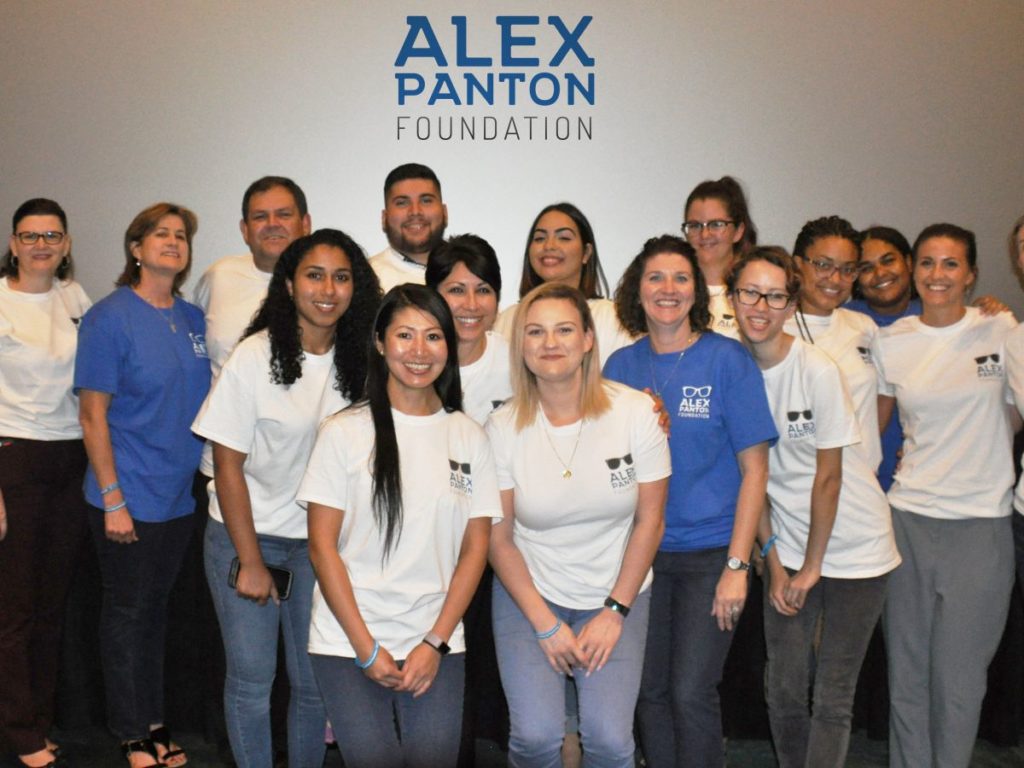
(CNS Local Life): More than half of young people in the Cayman Islands have been bullied, often causing severe mental health problems, and yet there has been little effort by parliament to act on the draft legislation to counter it, which has been around for years. At a recent presentation on bullying, for which only about 20 people showed up, MLA Alva Suckoo said he plans to file a private member’s motion next month to get anti-bullying legislation finally passed.
The event, held last Thursday, 21 March, in Bodden Town, focused on bullying and mental health. It was the first in a series of district presentations, which will also cover young men at risk, jointly hosted by the Alex Panton Foundation and the Ministry of Community Affairs.
Consulting clinical psychologist Dr Erica Lam, of the foundation, said that one of the aims of the sessions is to help parents understand bullying and how to recognise signs of it in their children, as well as learn strategies to prevent bullying, along with looking at the different causes and types and how it affects young people’s mental health.

“You have to look at bullying and mental health together,” she explained, pointing to their “associated relationship”.
One of the key things parents can do is simply to listen to their children, Lam said, noting that when a child is bullied, it is normal for parents to feel angry but they need to listen first, stay calm and be supportive. “It is a big step for them to tell you what happened,” she added, saying parents should only intervene when the young person is ready.
In general, parents should talk to their kids, coach them and be supportive, so they will “feel safe to come back to you to discuss other issues”, Lam explained.
Children who are bullied can suffer from post-traumatic stress disorder, especially if they have been facing prolonged emotional abuse, she added, outlining some of the signs of bullying. Among the indicators parents should look out for are any changes in the student’s performance at school, along with persistent absences due to various excuses; reduced interest in friends and increased isolation; loss of interest in the usual activities; changes in behaviour, such as becoming more grumpy, aggressive, agitated, withdrawn and distressed; changes in weight, both gains or losses; and signs of self-harming, including cutting.
The hourlong presentation also touched on how there should be a whole-school approach with an appropriate and consistent policy in place to handle bullying that is communicated to all staff as well as parents and students, and that each incident should be dealt with quickly and effectively.
Towards that end, draft anti-bullying legislation has been floating around for several years without any action being taken, a situation that clearly frustrates Suckoo, the MLA for Newlands, who attended the presentation. He has been liaising with United Against Bullying, a non-profit foundation headed by Janet Young, one of his constituents.
He told CNS he has been “pushing to get (anti-bullying) legislation in place”, and plans to file a private member’s motion the first week of April to get the bill to the floor of the House to debate and finally pass.
“It’s been dragging on,” he said, noting that he heard there has been some resistance to the bill. “I’m going to put everyone on the spot,” Suckoo said, and ask MLAs, “Why don’t you want this?” He called the situation “life and death” for some children who have been severely impacted by bullying.
The Alex Panton Foundation, established to improve the mental health of children and young adults through advocacy, awareness and support, was founded in memory of Alex Panton, who succumbed to the effects of severe depression at age 16.
At the foundation’s second annual Youth Mental Health Forum in February, the results of a National Drug Council survey were shared, which highlighted the pervasive problem of bullying and its related issues.
Wayne Panton, former Cabinet minister and father of Alex, noted the lack of men attending the presentation. He told those gathered he would like to see more men come to the meetings and become “engaged and involved”. He added, “Men need to be role models and set examples for boys. Men and women have to contribute equally to the functioning of society.”
The next presentation on bullying is set for Tuesday, 9 April, starting 6:30pm, at the John Gray Memorial Church in West Bay.
For more information on the Alex Panton Foundation and the complete schedule of upcoming presentations, go to the foundation’s website



I have doubts that Youth Mental Health Forum knows what it is they are doing. If they don’t focus on empowering victims and teaching them coping skills, focusing on bullies instead, they are on the wrong path.
I wish they would respond to the comments on this article. Many useful suggestion might be outside their area of expertise so they could learn from it.
To be an expert in youth mental health and I believe there are few and far between (internationally) one has to start with understanding what to expect from a child’s brain.
When a doctor tells the child’s parents that he is “not ready” for a particular activity, he means the child’s psycho-physiological state, his nervous system, his body.
How many parents and teachers know about the process of myelination in the child’s brain?
At the time of birth, the infant’s brain mass is about a quarter of the adult brain mass. Further, the speed with which the baby’s brain grows is fantastic! By the age of two, he reaches three-quarters of his “adult” weight. But what is behind this so rapid growth of the baby’s brain? What exactly growing in the child’s brain is?
The fact is that most of the nerve cells (neurons) are formed in the baby in the womb. The subsequent spasmodic growth of the child’s brain is due not so much to the fact that new neurons appear in it, but to the growth of cells that serve as a kind of membrane for the nerve pathways. Nerve cells are small cells with large and sometimes even giant branches (axons and dendrites). These branches link the nerve cells to each other, as railway tracks connect the settlements of a vast country. This is a whole network.
A nerve impulse runs along the branches from one nerve cell to another, and so we perceive images, feelings and even thoughts that we perceive in our head, thanks to these impulses we are able to move our body just to live.
But the nerve cells themselves are completely helpless. If you do not hide them in a special – myelinous- casing that resembles the rubber sheath of an electrical wire, then all the “psychic electricity” will dissipate, and the branches may even die. This myelin sheath is the glial cells. It is necessary to understand that myelin is a very important thing. There is a whole list of disabling diseases which are based on the death of myelin.
So, a child is born already with a ready-made set of nerve cells, which are interconnected by a huge number of connections. But myelin in the head of the child is extremely small. This explains the fact that a baby is completely incapable of controlling his muscle movements, and in general, there is little that he can do to control himself.
Myelination in the child’s brain goes gradually and fragmentary . The brain of the child must mature to each specific function, the corresponding nerve paths must be formed, build up and start working.
The processes of myelination – occurs in jumps. The first jump happens at 3.5-4 years. The child takes control of his behavior (in his elementary forms), begins to think about what he will do, that is, no plans appear in his head. The second jump is at 7–8 years old. The child begins to think not only about what he will do, but also about what result it should lead to. And the third leap in development is about twelve years old. The child begins to think not only about what it will do and what the result will lead his actions, but also about what the results of his actions, in principle, can lead.
By what year do myelination processes end in the children’s brain? The final myelination of his brain comes at 25 years old.
Understanding of this process is the very first, fundamental step in designing any program or policy related to youth mental health. Be it suicide prevention or bullying.
Now, do you really believe that laws, policies and regulations covering bullying can do good to a child whose brain has not completed the myelination processes?
What exactly one can do with a 6 yo child who was labeled as a bully? Is he really a bully when his brain hasn’t even reached the second myelination jump that occurs at 7–8 years?
Empowering a kid would serve him life time. He would have many bullies on his life path, but he would know how to deal with them.
What we get wrong about bullying.
https://www.smh.com.au/lifestyle/life-and-relationships/what-we-get-wrong-about-bullying-20180610-p4zkoj.html
“Governments have implemented anti-bullying programs, schools write policies, and parents are vigilant, yet we appear unable to solve the bullying problem. Perhaps it’s time for a re-think.”
An Alternate Approach to Stop School Bullying: Fix the Victims.
“Instead of asking why kids bully, new research focuses on treatment, and seeks to empower victims with ways to cope with peer aggression”
https://www.theatlantic.com/health/archive/2011/11/an-alternate-approach-to-stop-school-bullying-fix-the-victims/247548/
I encourage you to do some research. What you are saying is incorrect!
Who?
The answer is to grow a backbone.
Really?
Figuratively speaking yes.
Ok so tell a 6 year old to grow a back bone!! Smh
If 6 years old is being bullied, he is in a wrong environment. Parents’ fault.
It is usually starts in a middle school. Not in pre school or kindergarten.
Really, you have no clue!
Our politicians too busy helping our major developer sell the public on erecting a phallic like skyscraper in our small island to worry about things like our kids and their mental health
More thought police are the answer.
In order to do right by our students we must recognize that the preadolescent and adolescent brains are not yet fully developed. And the most important part of the brain that has not yet developed is the prefrontal cortex, the part of the brain that deals with functions such as impulse control, judgment, and empathy. This means children, even older teenagers, have brains that are not yet capable of being consistently in control of themselves, even when they try really hard.
If you consider definition of bullying in light of brain development, and think about behaviors such as teasing, name-calling, and social exclusion, you can see why kids and teenagers might exhibit these behaviors, given the fact that their brains simply aren’t fully formed yet.
We must adopt policies that reflect a brain development and abandon the conceptual frameworks and rhetoric that encourage us to understand childhood aggression in simple and formulaic ways.
We can’t expect kids to sail through childhood and adolescence without making stupid mistakes. When a child misbehaves and is labeled a bully, the label declares something about his character, not just about his behavior. The use of labels does nothing to help us to help kids.
Normalized bullying is already the status quo.
Sadly, our Cabinet empathizes more with the bully ethos than with any victims. They are also allergic to good governance and justice. Don’t expect much.
Extreme, criminal bullying must stop. But teach your kids coping skills and resilience. Bullying exists since forever. Kids weren’t killing themselves over bullying. I, in my youth, was bullied at new school for who knows reason. Killing myself never crossed my mind. I stood up for myself. Being a girl, I didn’t hesitate to get into a physical fight with my bully, only after she attacked me. My parents never knew.
Here is the timeless, quiding wisdom from William Shakespeare which we were made to memorize in high school:
Hamlet, Act 3.
LORD POLONIUS
“And these few precepts in thy memory
See thou character.”
“Beware
Of entrance to a quarrel, but being in,
Bear’t that the opposed may beware of thee.
Give every man thy ear, but few thy voice;
Take each man’s censure, but reserve thy judgment.”
https://www.gutenberg.org/files/27761/27761-h/27761-h.htm#sceneIII_3
Bulling Must stop, the bullies must be punished
You wish.
Teenage pregnancy must stop. Drunk driving must stop. Bulling must stop. War in Syria must stop. Say no to drugs.
But reality tells us that it is impossible to change human behavior by Laws. Laws are for law abiding people.
Just goes to show that the politicians don’t care about our children. At least Mr. Suckoo trying to do something.
Bullying exists in the workplace too. One particular statutory authority thrives on it!
The private sector has this bullying market cornered! You bet your backside that you can’t stand up for yourself or go to the labour board unless you are independently wealthy because they will blacklist you from getting a job elsewhere by telling their friends not to hire you.
There is prolific bullying of all nationalities in the workplace too, both public and private sector. So far as I can see politicians and some wealthy are bullies too. It all needs to be stamped out.
Shows you how politicians care.
They are the bullies and are not capable of understanding being bullied.